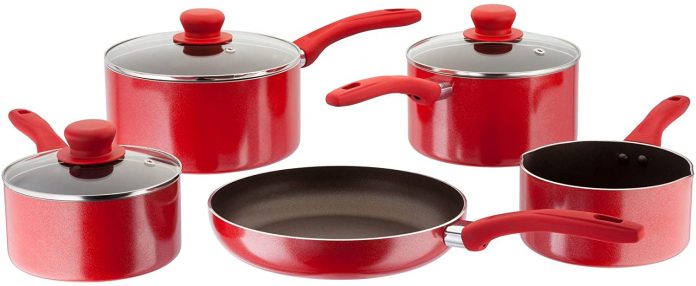Whether a full meal or a quick fix, a hungry person will always forage for something to eat. Civilisations of cooking experience perfected the way people now prepare food. From basic roasting during the Stone Age, it has now evolved into a lot of processes – boiling, sautéing, frying, and even baking. Different types of saucepans cookware are necessary to ensure that a particular kind of food is cooked evenly and deliciously.
One of the most important cooking utensils around is the different types of saucepans. They have a crucial role in kitchens all around the globe due to its many functions and versatility. It evenly distributes heat throughout the liquid in the pan and has high sides which come with a long handle and a lid. You use it to make stew, sauce, soup, and simmer other liquids. The cookware is deeper than a frying pan but smaller than a stockpot. A home kitchen has at least one or two different types of saucepans, and a professional one has almost all kinds. It is made out of several different materials.
Stainless steel
If you are not keen on pan-maintenance, then a stainless steel saucepan is probably your best cooking option. It has less reactions to acidic or high-alkaline food, so it does not discolour as much. If there are burnt spots on it, you can scrub to your heart’s content because it is durable enough for scratches and dents on the surface.
Copper
A copper pan is a beautiful addition to your pan collection. It is like a luxury item in the kitchen, and yet highly efficient in both form and function. If maintained well, it can last you a couple of decades at the very least. Heat distribution is even because the material is known to conduct both electricity and heat well. So hotspots (where food usually burns) are usually non-existent while you are cooking. Also, it easily reacts to sudden heat changes, so rising and lowering temperatures will not be a problem.
Aluminium
Aside from affordability, the next best feature of an aluminium saucepan is that it can heat up quickly. So if your recipe calls for fast cooking, then this is your best option. Just like stainless steel pans, it also does not react to acidic ingredients. You can cook anything in it. It is highly resistant to very high temperatures, so your pan is safe from harm.
Cast-iron
If you are looking for a saucepan that can heat slow and steady, then the cast-iron is the pan for you. It may not seem easy to cook in it, but once fully heated, it evenly slow-cooks your food to perfection. If you want it to be non-stick, you should season it properly before the first use. You can even use it to sear meat and place the pan directly from stove to oven for additional internal cooking. But it would help if you also were careful since this is made out of heavy material, and avoid using them on a glass stovetop.
Ceramic
Not to be left behind, a ceramic saucepan is also an attractive piece in the kitchen. These pans handle the heat well and are non-stick, so they are easy to clean. It is also eco-friendly because metals and chemicals do not leach into your food. It can also handle acidic and alkaline-based foods well.
Not everyone is blessed with a cooking talent. But it does not mean that you cannot learn how to do it. Cooking in different types of saucepans with your trusty recipes can make you a whiz in the kitchen in no time.









